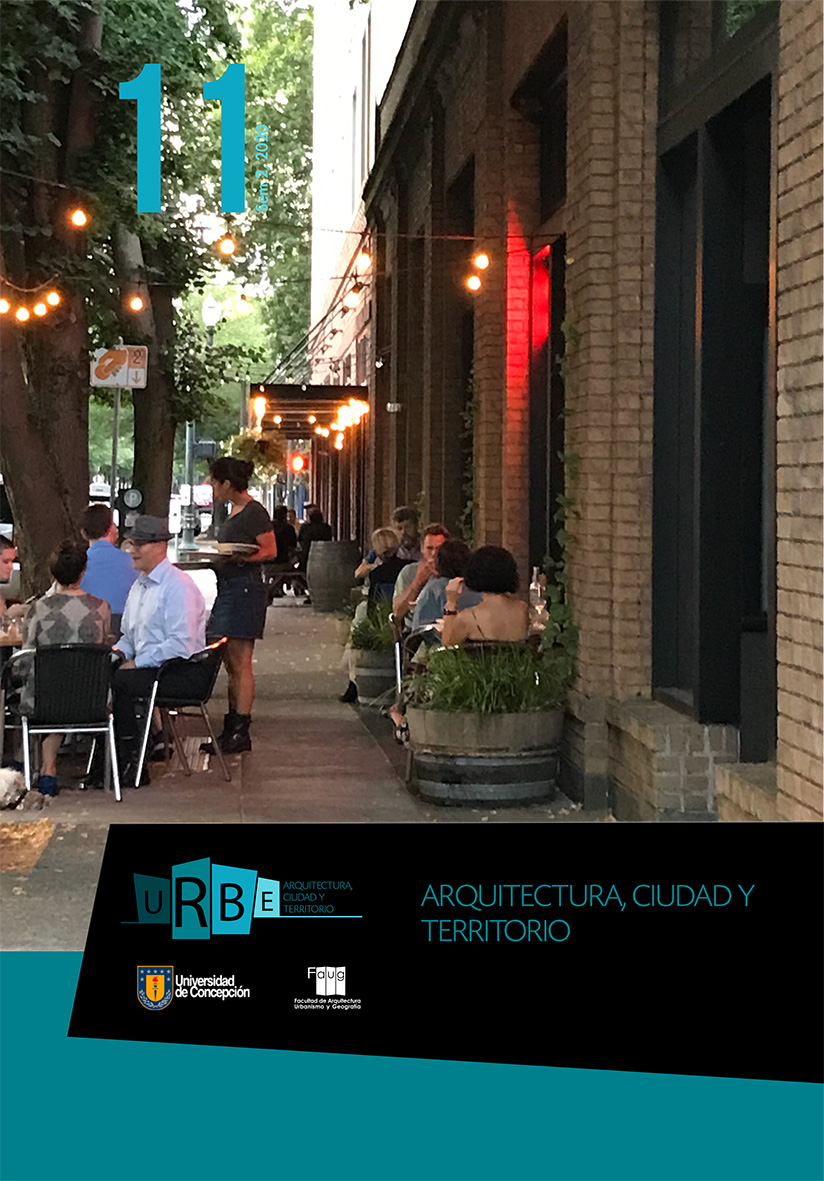The construction of landscapes by travelling on the train from Concepción to San Rosendo
DOI:
https://doi.org/10.29393/UR11-7CPCA10007Keywords:
landscape, heritage, railway, travel, trainAbstract
The arrival of the railroad changed the way of traveling and therefore the way of relating to the territory. The train from Concepción to San Rosendo continues in operation and is positioned as the main means of transport that connects both towns. This article addresses the concept of landscape to understand the most significant territorial elements in the train journey between Concepción and San Rosendo. For this, photography is used as a methodological registration tool together with interviews with the usual inhabitants of San Rosendo who carry out the tour, in order to identify the heritage values that are assigned to said landscape. The study thus seeks to contribute to the current valuation of the heritage of San Rosendo. The results allow us to understand that the landscape is not simply what is found there, given in nature, but what is observed, identified, selected and, consequently, valued. From the experience of the train trip, this is understood from the relation of the inhabitant with this landscape, in how it relates to said territory, therefore in how it is inhabited and signified.Downloads
References
Augé, M. (2003). El tiempo en ruinas. Barcelona: Gedisa.
Bernard, R. (2010). La Situación Económico-Política de los Ferrocarriles del Estado. Cámara Chilena de la Construcción. Santiago, Chile: Edic. Universidad Católica de Chile.
Cabezas, F. (2003). Análisis arquitectónico del patrimonio ferroviario de San Rosendo. Concepción: Universidad del Bío Bío.
Careri, F. (2002). Walkscapes: El andar como práctica estética. Barcelona: Gili.
Cambón, E. (2009). Paisajes Culturales como patrimonio: Criterios para su identicación y evaluación. Arquitectura y Urbanismo, 30(1), 10-17.
Deleuze, G. y Guattari, F. (2002). Mil Mesetas, Capitalismo y Esquizofrenia. Valencia: Pre-textos.
Guerrero, R. (2017). Memorias, significados y olvidos en la construcción social del patrimonio ferroviario del Sur de Chile. Revista Austral de Ciencias Sociales, (33), 59-76.
Halbwachs, M. (2004). La memoria colectiva. Zaragoza: Prensas universitarias de Zaragoza.
Ibarra, C. (2004). Sesenta años de Historia Ferroviaria en la Región del Biobío: 1870-1930. Análisis geográfico, e conómico y social (Seminario de Título para optar al Grado de Licenciado en Educación mención Historia y Geografía). Concepción. Universidad de Concepción.
Instituto Nacional de Estadísticas. (2017). Censos de población y viviendas 2017. Chile: Instituto Nacional de Estadísticas.
Maderuelo, J. (2003). Aquello que llamamos paisaje. Visions, (2), 20-25.
Martínez, E. (2012). Teorías del paisaje. En J. Arnaez, P. Gonzalez, T. Lasanta, B. Valero. y J. Garcia. (Eds.), Geoecología, cambio ambiental y paisaje: homenaje al profesor Jose Maria Garcia Ruiz (pp. 415-426). España: CSIC.
Menchaca, J. (2003). San Rosendo, lugar de anuncio y silencio. Concepción: Universidad de Concepción.
Nogué, J (2007). Paisaje, Identidad y Globalización. Fabrikart. arte, tecnología, industria, sociedad, (7) 136-145.
Nogué, J. (2010). El retorno del paisaje. Enrahonar, 45, 123-136.
Quintero, V. y Hernández, E. (2012). Paisajes patrimoniales y percepciones locales. En I. Askoaga y O. Garro, (Eds.), XVII Congreso de Estudios Vascos: Innovación para el progreso social sostenible (pp. 627-647). Sevilla: Universidad Pablo de Olavide. Recuperado de: http://www.euskomedia.org/PDFAnlt/congresos/17/06270647.pdf
Sauer, C. (2006). La morfología del paisaje. Polis, Revista Latinoamericana, (15). Recuperado de: https://journals.openedition.org/polis/5015
Sepúlveda, A. (1959). Historia social de los ferroviarios. Santiago: Siglo XX. Sontag, S. (1996). Sobre la fotografía. Barcelona: Edhasa.
Thomson, I. y Angerstein, D. (1997). Historia del Ferrocarril en Chile. Santiago, Chile: Dirección de Bibliotecas, Archivos y Museos (DIBAM) / Centro de Investigaciones Diego Barros Arana.
UNESCO. (2013). Operational guidelines for the implementation of the world heritage convention. Paris: World Heritage Centre. Recuperado de: http://whc.unesco.org/archive/opguide13-en.pdf
Villagra, P. (2010). Paisajes Cambiantes: Percepción, disturbios naturales y la reconstrucción del paisaje. Revista AUS, (7),
-19.
Published
How to Cite
Issue
Section
Copyright (c) 2020 CLAUDIA ARANCIBIA ROJAS

This work is licensed under a Creative Commons Attribution 4.0 International License.
Revista URBE. Arquitectura, Ciudad y Territorio tiene licencia de Creative Commons Attribution 4.0 International (CC BY 4.0) y debe citarse correctamente.









